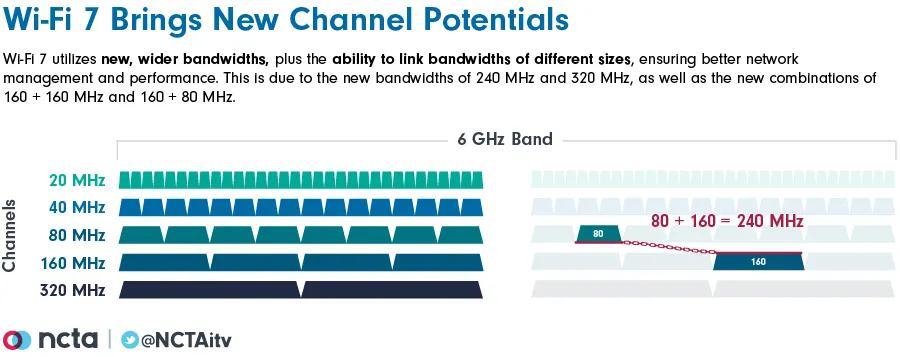Over the past few years, more and more devices with Wi-Fi 6 and Wi-Fi 6E certification have started hitting the market. That means better security, faster speeds, better energy efficiency, and lower latency when these devices are paired with a router that also bears a Wi-Fi 6 or 6E certification. As those devices continue to fill our lives, the next generation of Wi-Fi technology is already under way. Under development now, Wi-Fi 7 will improve upon the updates that come with Wi-Fi 6E as well as incorporate new developments since the last certifications. These updates will facilitate the next great tech advancements, ranging from virtual reality to wireless gaming to interactive telemedicine.
One of the improvements Wi-Fi 7 will tout is the expansion of channels and bigger channels. As they currently exist, the 2.4 GHz, 5 GHz, and for Wi-Fi 6E specifically, 6 GHz bands are broken down into various channels that devices can utilize. The smallest Wi-Fi channels are 20 MHz but can be linked together to create bigger channels. Wi-Fi 6E networks will provide increased capacity by operating on the 6 GHz band with 14 additional 80 MHz channels and 7 additional 160 MHz channels.

Wi-Fi 7 will double the channel size by allowing for 320 MHz channels. That means that Wi-Fi 7 will have higher capacity and can deliver speeds up to four times what the technology currently offers. It’s like adding lanes to a highway, as more space to maneuver means it’s harder for traffic to build up. This delivers a smoother experience. To construct these extra lanes, however, the United States must continue to find more spectrum for unlicensed use to accommodate these larger channels.
With updates to better manage and route data packages, Wi-Fi 7 will be ready for new technologies down the road, like augmented and virtual reality. As more Americans work remotely, attend school outside a classroom, or seek healthcare from the comfort of their own home, new bandwidth-intensive applications are springing up. The coming updates will allow a low-latency experience for transformational technologies, making what was once science fiction into a reality.
These updates are all built on top of the new features that come with current Wi-Fi 6E certification. That includes device level security, so a single infected IoT device can’t spread to the rest of a home’s smart devices, decreased latency, and greater energy efficiency thanks to more resourceful data management. To learn more about what’s currently on the market, be sure to check out the Wi-Fi 6E explainer from earlier this year.
These Wi-Fi innovations will work hand in hand with the 10G platform to seamlessly deliver the network of tomorrow, whatever next great technology is around the corner.









